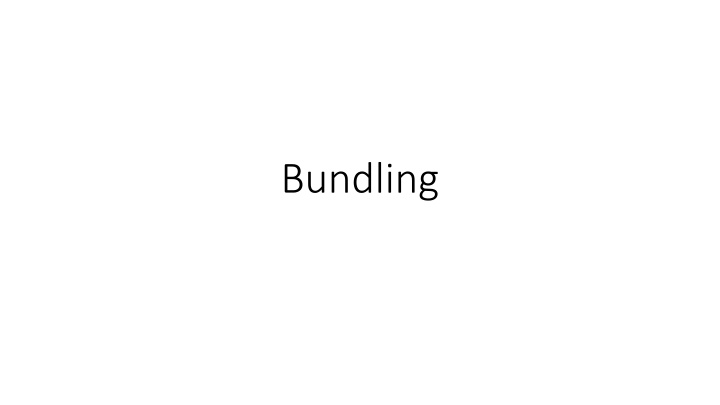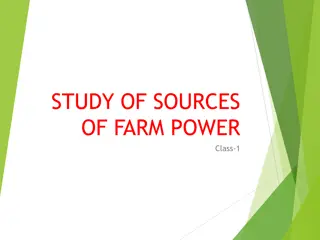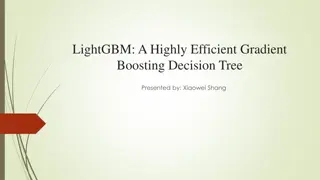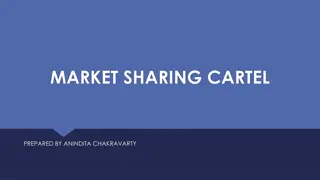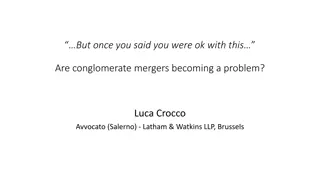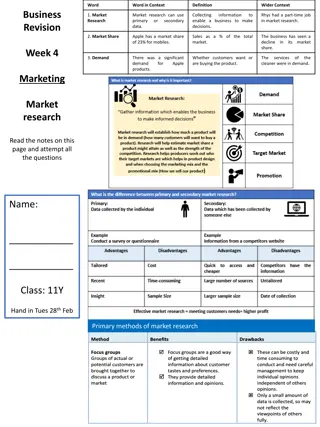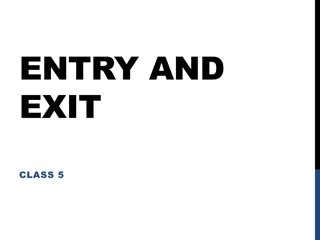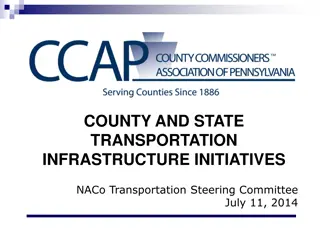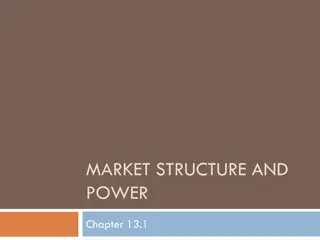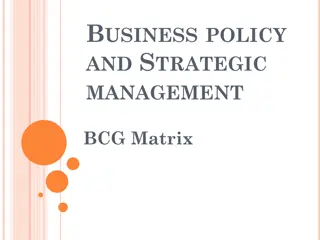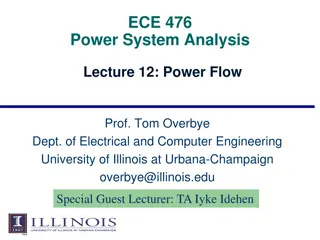Bundling and Market Power
The concept of bundling in market analysis, focusing on how total demand can be graphed with two goods. Dive into the implications of market power on pricing strategies and revenue optimization through bundling. Uncover how setting prices for bundled goods can impact consumer behavior and profitability.
Download Presentation

Please find below an Image/Link to download the presentation.
The content on the website is provided AS IS for your information and personal use only. It may not be sold, licensed, or shared on other websites without obtaining consent from the author.If you encounter any issues during the download, it is possible that the publisher has removed the file from their server.
You are allowed to download the files provided on this website for personal or commercial use, subject to the condition that they are used lawfully. All files are the property of their respective owners.
The content on the website is provided AS IS for your information and personal use only. It may not be sold, licensed, or shared on other websites without obtaining consent from the author.
E N D
Presentation Transcript
(0 , 0) D pA = 1 - qA With 2 goods, total demand can be graphed as the area in a square. D pA (1 , 1) A
(0 , 0) DA,B pA = 1 - qA pB pB = 1 qB D With 2 goods, total demand can be graphed as the area in a square. pA (1 , 1) A
(0 , 0) pA = 1 - qA DA,B pB = 1 qB We know that with market power each good will be priced so that MR = MC. Here that means that Mr = 1-2q. To simplify, let s assume MC = 0. Then pB D pA,B=1/2and qA,B=1/2 The area with both shades represents people who buy both goods. pA (1 , 1) A
Analysis With basic demand p = 1 q and MC = 0 we have a producer with market power setting q = and p = Revenue (and hence profit) will be for each good. Without bundling, total revenue and profit will thus be .
(0 , 0) D pA = pB With a pure bundle, you have to buy the same amount of each good. At p = 0 everyone buys. At p just below 2 only those who really like both goods buy. D pA = pB = 0.75 So if p = 1.5 then only those will to pay 0.75 (or more) for good A and for good B will buy. QA (1 , 1)
(0 , 0) D pA = pB pA = pB = 0.5 So for the bundle pbundle = 1 With a pure bundle priced at p = 1 we get the consumer who is willing to pay p=1 for good A but nothing for good B at one corner, and the vertex is for that last (marginal) consumer who is willing to pay p=1 for each good. D Total revenue = and so with MC=0 Total profit = QA (1 , 1)
So... With a pure bundle, the marginal consumer who likes both goods will pay p = 1 for each or pbundle = 2. If we set the price of the bundle equal to 1, then we sell bundles as per the shaded triangle, which is half the square. We thus know we can do at least as well as selling the two goods independently. Can we do better? YES, if we drop the price at p=1 we pick up more quantity than we lose in revenue. See the following graph.
(0 , 0) qA = qB So p ranges over [0,2]. Quantity NOT sold = x p x p With the price of the bundle p < 1 you fail to sell only to those who value good A + good B by less p, or the upper right triangle. D Total quantity is thus 1 p2/2 and total revenue is p p3/2 so MR = 1 3p2/2. MC = MR = 0 at pbundle < 1 ? ? = 0.816... p = QA (1 , 1)
